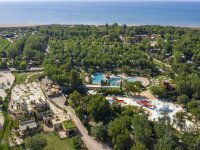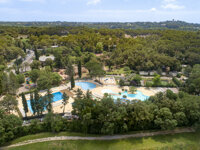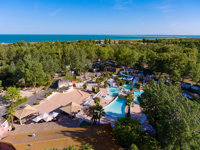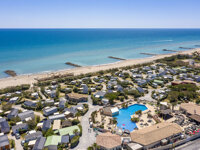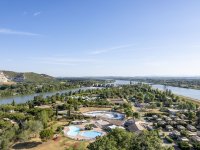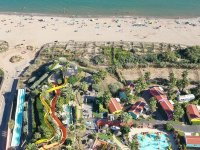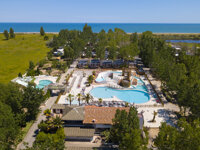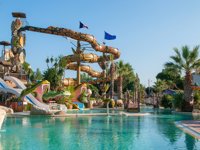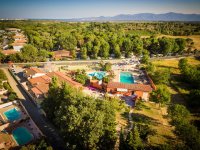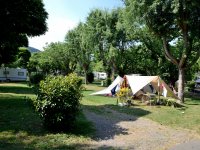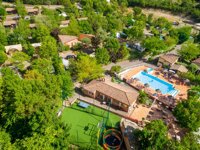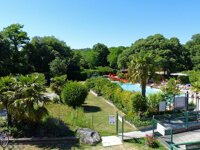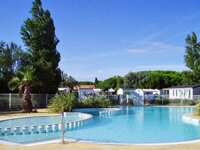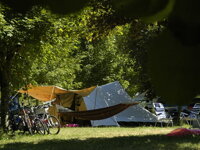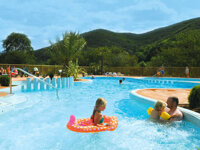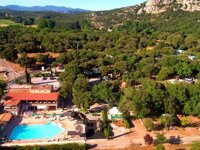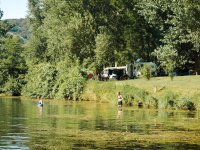Camping in Languedoc-Roussillon
322 campsites in France, Languedoc-Roussillon
Campsite Listing Google Map
The following consent is required:
Tracking & performance, Targeting & advertising.
Languedoc-Roussillon
Languedoc and Roussillon form part of the Massif Central. With its huge sandy beaches the Languedoc region is renowned for its long sunshine records, and the pretty coastal villages of Roussillon are at their most beautiful at sunset, erupting in a riot of colour.

Stretching from the Rhône Valley in the east to the Spanish border in the southwest, Languedoc-Roussillon encompasses some of southern France’s most famous resorts and the unspoilt territory of the Gorges du Tarn. Languedoc-Roussillon is a mixture of rugged mountains, fertile coastal plains and a long sandy coastline dotted with modern resorts. It’s a region that appeals to sunseekers and history enthusiasts alike, with an eclectic blend of lively urbanised locations and dramatic panoramas.
Once an independent duchy, the ancient land of Languedoc combines two distinct regions: the vineyards of the Corbières and Minervois and the coastal plain stretching from the Rhône to the Spanish border. Much of the region is rugged and unspoilt, offering opportunities for walking and climbing. Away from the brash developments, there is plenty of opportunity to discover reminders of the region’s dramatic history – the Roman remains at Nîmes, the walled city of Carcassonne and the many Cathar castles perched on rocky hilltops.
Today, the plains are given over to agriculture and wine, fruit and vegetables in the Roussillon in particular, while Languedoc is responsible for around one-third of France’s total wine production, with appellations such as Corbières, Minervois and the sparkling Blanquette de Limoux. But above all, the extensive shores and long hours of sunshine make this a paradise for beach enthusiasts. La Grande Motte, Cap d’Agde, and Canet are all being promoted as an alternative to the more famous Mediterranean stretches of the Côte d’Azur.
The northernmost part of Languedoc, Lozère, is the only department that doesn’t include coastline, but it more than makes up for its lack of beaches with the spectacular forested gorges that rise on either side of the River Tarn. Picture postcard villages such as Castelbouc huddle among the trees, and there are plenty of vantage points from which to admire the views. The Canal du Midi, which connects the Garonne River to the Mediterranean, is a tranquil and richly cultural route that passes the fortified city of Carcassonne and meanders through Béziers and out to Sète, where it joins the sea. Crossing several departments, it’s a marvellous journey to walk or cycle.
Due to its southern position, Languedoc-Roussillon is best explored in spring, early summer or early autumn when temperatures are cooler and the crowds have dispersed.
Major cities: Montpellier, Perpignan, Carcassonne.
Places of interest

Aigues-Mortes: Medieval city.
Béziers: Wine capital of the region; St Nazaire cathedral; Canal du Midi.
Carcassonne: Largest medieval walled city in Europe.
Collioure: Picturesque coastal village popular with artists.
Limoux: Medieval town; Notre Dame de Marseille Basilica; St Martin church.
Montpellier: Universities; Roman sites; Gothic cathedral.
Nîmes: Roman remains; Pont du Gard.
Perpignan: Kings’ Palace; Catalan characteristics; old fortress.
Sigean: 700-acre African safari park.
Cuisine of the region

Cooking draws heavily on local produce: garlic, olive oil, tomato sauces and herbs from the ‘garrigue’; apricots, peaches and cherries in jams and puddings.
Aïgo Bouido: Garlic soup.
Boles de picoulat: Small balls of diced beef and pork, garlic and eggs.
Bourride: A fish stew with garlic mayonnaise.
Boutifare: A sausage-shaped pudding of bacon and herbs.
Cargolade: Snails, stewed in wine.
Cassoulet: Hearty stew of haricot beans, sausage or pork and preserved goose.
Touron: A pastry of almonds, pistachio nuts and fruit.
